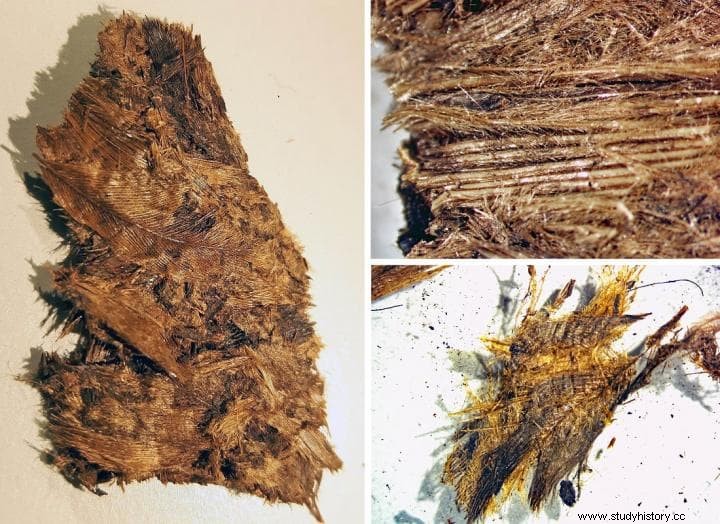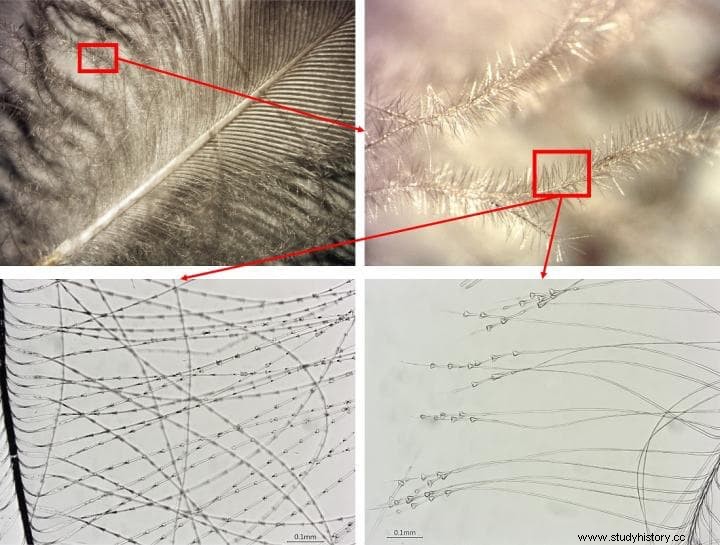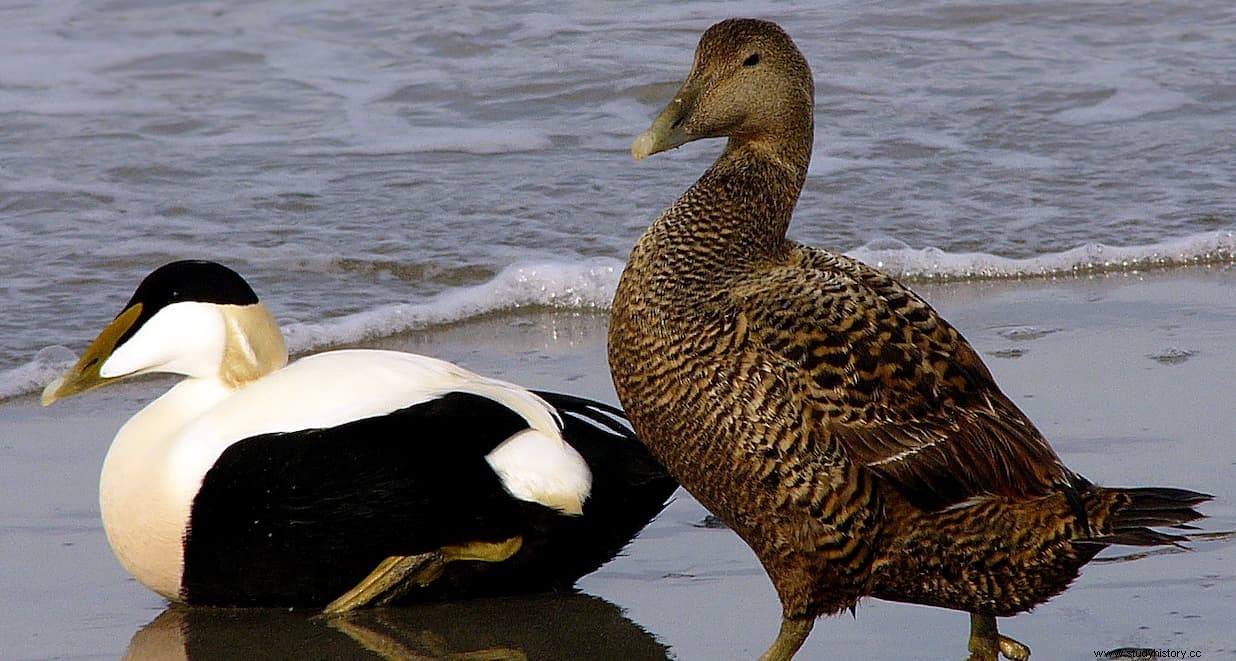The Valsgärde burial site, just outside Uppsala in central Sweden, contains more than 90 Iron Age graves. We could say that Valsgärde is the Scandinavian answer to Sutton Hoo, in England, as shown in the movie The Dig , says Birgitta Berglund, Emeritus Professor of Archeology at the Museum of the Norwegian University of Science and Technology (NTNU).
Valsgärde is especially known for its spectacular ship graves from the 600s and 700s of the Christian era. This time is in the middle of what Norway calls the Merovingian period, the era just before the Viking Age.
Two of these spectacular ship graves are the focus of this story, or more specifically, the story is about the bedding found in the graves.

When NTNU researchers investigated which birds had contributed their feathers to bedding, they made a startling discovery that provides new insight into Iron Age society.
The boats carrying the two dead were about 10 meters long, with room for four or five pairs of oars. Both were equipped for high-ranking warriors, with richly decorated helmets, shields, and weapons. Provisions and hunting and cooking tools for his last trip were also included.
A Eurasian eagle owl (Bubo bubo had been deposited in one of the graves. ) with the severed head. We'll get back to it. The horses and other animals were arranged near the boats.
The buried warriors seem to have been equipped to row to the underworld, but also to be able to disembark with the help of horses says Berglund.
Two warriors lay on layers of feather bedding. The contents of the bedding probably served more than just padding.
Down bedding may be considered a modern concept, which has certainly only been available to ordinary people in recent times. The down bedding from the Valsgärde tombs is the oldest known in Scandinavia and indicates that the two men buried belonged to the highest strata of society.
Wealthy Greeks and Romans used down for their beds a few hundred years earlier, but down probably didn't become more widely used among wealthy people in Europe until the Middle Ages says Berglund.
Berglund has studied down harvesting in the coastal communities of Helgeland in southern Nordland County for many years, where people soon commercialized down production by building houses for the eider ducks which were the source of the down. The theory was that down from here might have been exported south, so Berglund wanted to investigate whether the Valsgärde bed contained eider down.
It turned out that many types of feathers had been used in Valsgärde's bedding. Only a few eider duck feathers were identified, so we have little reason to believe that this was a product from Helgeland or other northern areas says Berglund.

However, she was not disappointed by this discovery. The wide variety of species provided researchers with a unique insight into the area's bird fauna in prehistoric times, as well as how people related to it.
Feathers provide a source for new perspectives on the relationship between humans and birds in the past. Traces of birds other than those used for food are rarely found in archaeological excavations , says the researcher.
We also believe that the choice of feathers in bedding may have a deeper and more symbolic meaning. It's exciting . Berglund explains that according to Norse folklore, the type of feathers contained in the bedding of the dying was important.
For example, people believed that wearing feathers from domestic chickens, owls and other birds of prey, pigeons, ravens, and squirrels would prolong the fight against death. In some Scandinavian areas, goose feathers were considered the best to allow the soul to free itself from the body he explains.
These are well-known popular traditions that are collected from the eighteenth century. But they may have their roots in prehistory. In the Icelandic saga of Erik the Red, a pillow filled with the feathers of domestic chickens was placed on the throne of Heriolfsnes in Greenland, where a visiting shaman was to sit. The saga is considered to have been written in the 13th century, but deals with events around the year 1000 says Berglund.
The examples show that it is very likely that the feathers on the Valsgärde bedding had a deeper meaning than that of filling. It is also known that birds could be of special importance for information in shamanism – think of Odin's two ravens, Hugin and Munin.
It is difficult to know exactly what ritual function the Valsgärde feathers had. But the bed contained feathers from geese, ducks, grouse, ravens, sparrows, waders, and, perhaps most surprisingly, eagle owls.

Biologist Jørgen Rosvold, who now works at the Norwegian Institute of Natural History (NINA), identified the species from feather material.
It was a time-consuming and challenging job for several reasons. The material is decomposed, matted and dirty. This means that many of the special features that can be easily observed in fresh material have become indistinct, and much more time has to be spent looking for the distinctive features Rosvold says. It still amazes me how well the feathers were preserved, even though they had been buried for over 1,000 years .
Bed feathers weren't the only interesting bird find in the graves. One of the graves also contained a headless owl.
We know from recent graves that people took steps to prevent the buried from coming back from the dead, and it is easy to imagine that this was done much earlier as well. We believe that beheading had ritual significance in relation to burial says Berglund.
Swords found in Viking Age graves were sometimes intentionally bent before being deposited in the grave. It was probably done to prevent the deceased from using the weapon if he returned.
It is conceivable that the owl's head was cut off to prevent it from coming back. Perhaps the owl feather in the bedding also had a similar function? Ship graves from the same period similar to those at Valsgärde have recently been found at Salme in Estonia. There, two birds of prey were found with their heads cut off says Berglund.
